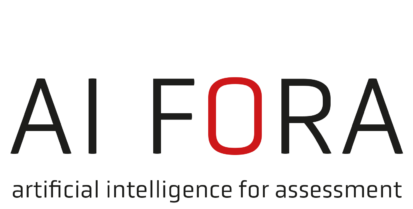Background
Background of the project is that the Estonian Unemployment Insurance Fund (EUIF) is currently focusing on offering services for the registered unemployed, i.e. after the person has already fallen out of the labor market. Preventing unemployment risks from materializing is however more cost efficient for society at large. EUIF hence has designed a prevention service package which is comprised of offering retraining vouchers and trainings designed to offer new skills, new professional qualifications, supporting entering a degree or vocational education program, supporting readjusting to changing business practices of the current employer as well as language training. Currently EUIF however lacks any ability to effectively identify people with high unemployment risk and subsequently cannot scale the service for full effect.
For this reason, the RITA project will design a machine learning driven assessment tool designed to prevent unemployment spells from occurring in the first place by:
- automatically segmenting the whole employed population based on predicted unemployment risk and estimated service impact on preventing unemployment;
- offering EUIF customer consultants segmented customer lists views according to unemployment probability and service impact for personalized (or automated) suggestions on taking advantage of the prevention services;
- performing automated impact assessment of the prevention service effectiveness.
Automated segmentation involves two classification problems – estimating unemployment probabilities for all people currently in active employment, as well estimating the predicted effect of the prevention service on reducing the probability to become unemployed. The unit of analysis is an individual in time.
At the analysis over the implementation of the services inside Töötukassa is under the scope of RITA project and be taken care of researchers there). The research project carried by the Institute of Social Studies of University of Tartu will tackle stakeholders outside the Töötukassa organisation.
The Case Study
The case to be studied will be the tool developed for Eesti Töötukassa/Estonian Unemployment Insurance Fund by Mihkel Solvak & colleagues within the framework of RITA project. The e-tool is about scoring risks for becoming unemployed and determining the persons with high unemployment risk scores among Estonian population in order to offer them relevant services. The piloting of the tool is planned for 2021, the legal analysis will be provided by 2022.
The research design of the Estonian case study contains the elements listed below:
- 2021. Determination of potential external stakeholders relevant to potential new service offered by Töötukassa (scoring risks for becoming unemployed and determining the persons with high unemployment risk scores among Estonian population in order to offer them relevant services). The stakeholders will be specified in the course of the project but they will be local government officials, representatives of organisations offering training and trade unions (depending of the branch of economy). Short report (1 page) mapping the different types of stakeholders with brief explanation about their connection with the issue
- 2021. Expert interviews with stakeholders, selected on the basis of mapping in p 1. One workshop (4-6 persons) with representatives of stakeholders plus 3-5 expert interviews (depending how many experts can participate in the workshop). Two mini focus group discussions (4-5 persons) or individual interviews with people belonging to the potential target groups of the service: one in Russian language and one in Estonian language. Input (key questions) come from the Mainz University. Short report about the results (about 5-6 pages)
- 2022/23. Workshop with the representatives of stakeholders (4-6 persons) – discussion of scenarios provided by Mainz University (the representative is participating). The sample of stakeholders is partially overlapping with the sample in p 2.
Own research of case study partners (previous projects, publications etc.) on the chosen domain:
- Vihalemm, T., Keller, M., Kiisel, M. (2015). From Intervention to Social Change: A Guide to Reshaping Everyday Practices. Routledge.
- Kutsar, D.; Kasearu, K.; Trumm, A. (2015). Local policymaking: the playground of ideas, mindsets, strategies and roles. In: Kutsar, D., Kuronen, M. (Ed.). Local Welfare Policy Making in European Cities (87−100). Springer. (Social Indicators Research Series; Vol. 59).
- Ainsaar, Mare; Roots, Ave; Trumm, Avo (2019). The Welfare System in Estonia: Between Liberalism and Solidarity. In: Sonja Blum, Johanna Kuhlmann, Klaus Schubert (Ed.). Routledge Handbook of European Welfare Systems. Routledge.
